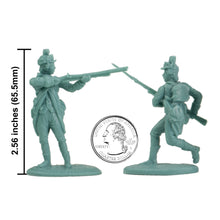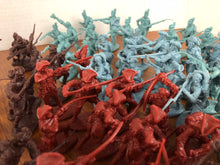
The success that the British enjoyed with their light infantry did not escape the notice of General George Washington. From the war’s earliest days, the Continental Army had used riflemen from the colonial frontier as scouts and skirmishers to good effect. Washington, however, wanted to increase his light infantry capability with better regulated soldiers who were more amenable to discipline.
On May 27, 1778, the Continental Congress stipulated that the Continental Army should consist of eighty infantry regiments. What had once been eight-company organizations would each add a ninth company composed of light infantry. Regimental commanders received instructions to keep their light companies at full strength by staffing them with the best men from their line companies, and with good reason. Light infantry service required special qualities. An enlisted man in the 8th Connecticut Regiment’s light company recalled: “The duty of the Light Infantry is the hardest, while in the field, of any troops in the army. . . . During the time the army keeps the field they are always on the lines near the enemy, and consequently always on the alert, constantly on watch. Marching and guard-keeping, with all the other duties of troops in the field, fall plentifully to their share.” In 1781, a Continental surgeon echoed these sentiments by characterizing the light infantry as a “select corps consisting of the most active and soldierly young men and officers.”
Following British practice, Continental light companies were often detached from their parent regiments and brigaded together in separate battalions or brigades. In addition to gathering intelligence and harassing the enemy, Continental light infantry also functioned effectively as shock troops. British light infantry had terrorized their foes by delivering a surprise, predawnbayonet attack at Paoli, Pennsylvania, that mauled nine Pennsylvania regiments on September 21, 1777. The British used the same tactics a year later to decimate a Continental light dragoon regiment billeted near Old Tappan, New Jersey. Washington’s light infantry proved that they could repay the enemy in his own coin.by conducting brilliant nighttime assaults against the British fort at Stony Point, New York, on July 15, 1779, and an advanced British redoubt at Yorktown, Virginia, on October 14, 1781.









